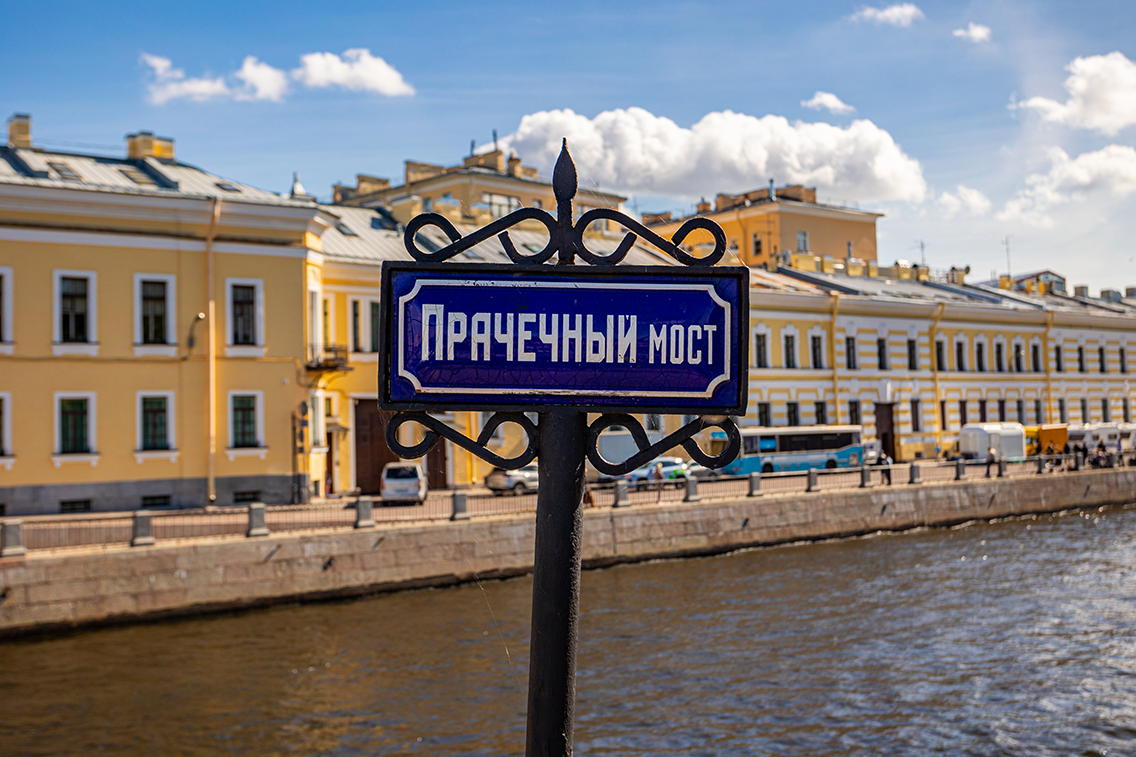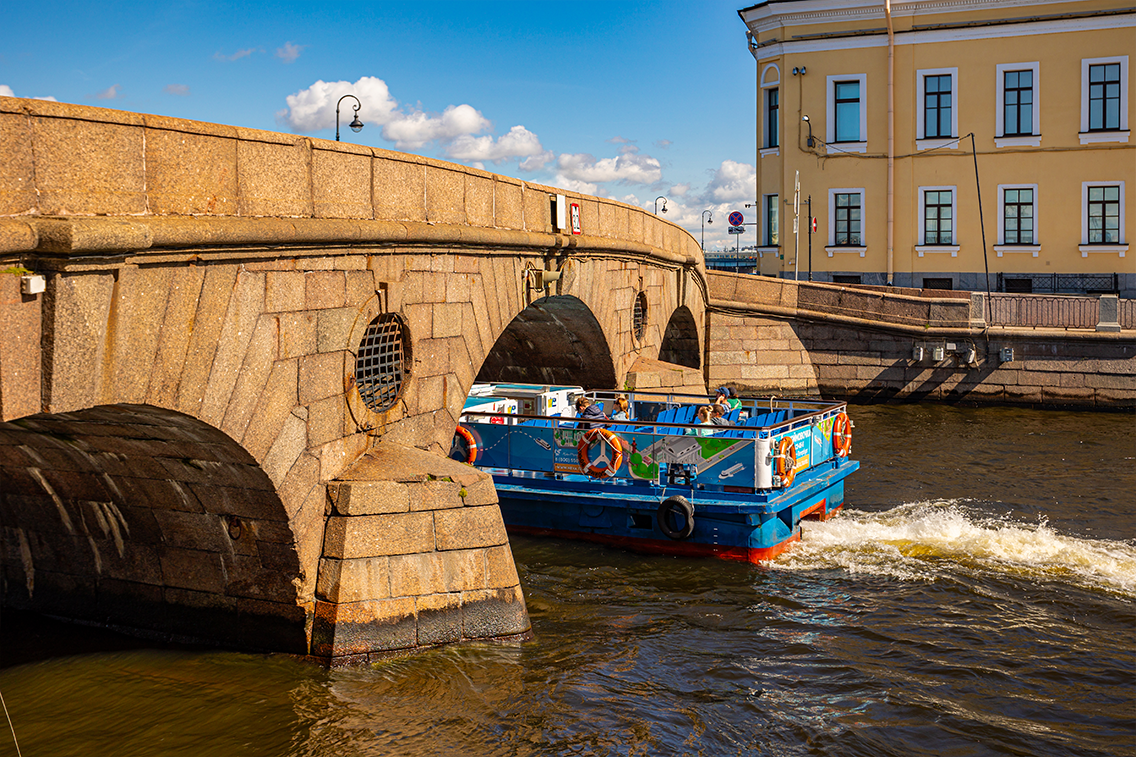 Back
Back
Prachechny Bridge

Prachechny most
Prachechny Bridge is one of the oldest and most beautiful stone bridges in St. Petersburg
The Laundry Bridge is a bridge in Saint Petersburg across the Fontanka River where it flows out of the Neva. It connects the Kutuzov Embankment and the Palace Embankment. The bridge is called Laundry Bridge because there were palace laundries nearby, at the corner of Sergievskaya Street and the Fontanka.
The Laundry Bridge, along with the Verkhne-Lebyazhy and Hermitage Bridges, is one of the first stone bridges in Saint Petersburg.
The bridge was built at the same time as the granite embankment of the left bank of the Neva near the Summer Garden. The general supervision of the construction of the granite embankments was carried out by the architect Yu. M. Felten. The construction of the bridge, which lasted from 1766 to 1769, was carried out under the supervision of the architect I. L. Rossi and the "quadrator master" (later the architect) T. I. Nasonov.
In 1908, a survey of the bridge was conducted, which revealed significant deformations. The results of the survey of the pile foundation by divers showed that its deformations led to the subsidence of the middle span, the opening of the seams in the parapets (due to which they lost their previous shapes), the formation of cracks in the left river support, etc.
In the same year, the City Technical Commission decided to reconstruct the bridge. In 1909, the City Duma instructed engineer K. V. Efimyev to draw up a project for the reconstruction of the bridge in two versions - with stone and metal spans. The famous bridge builder S. P. Bobrovsky acted as a consultant for the project. However, the Academy of Arts opposed changing the appearance of the Prachechny Bridge. As a result, the Duma approved another technical solution developed by engineer Efimyev, which consisted of "... laying foundations under the piers and abutments with the regulation of the exits from it." This project was completed only 16 years later, in 1926. According to the project of engineer B. D. Vasiliev, the bridge was fenced with partitions from the Neva and Fontanka sides, the water was pumped out, the arch supports were cut off, and a concrete pad was installed in their place. The work was carried out in small sections to prevent the continuous settlement of the supports.


